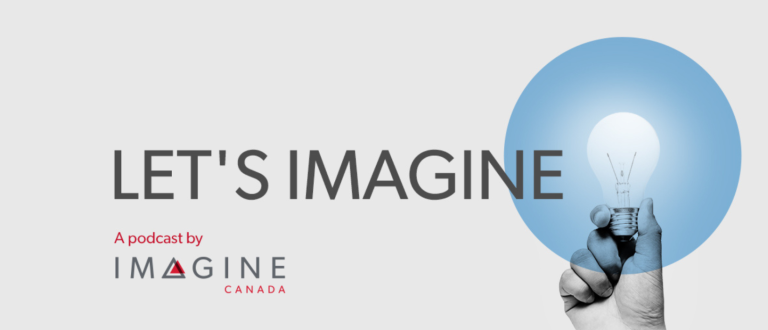There’s a new gal in town and she seems to be invited to all the coolest parties. We’re talking about data (not Star Trek Data, though we like him too). She’s actually kinda cool, once you get past the jargon and inaccessible language. Let us introduce you.
This is a data primer. We want to break down the landscape and bring together some of the key definitions, classifications, and issues surrounding data. Our hope is that you’ll see how important data is to your organization and begin exploring new ways you can use it and talk about it.
Data is vital to your organization
Data refers to all the facts and statistics informing what we’re really after, information that helps us make decisions. Data-driven charities are better able to serve their communities and address the complex social problems of today. Effective data use is central to great program development and execution. Organizations that successfully incorporate data also find it easier to demonstrate impact, fundraise and advocate. Charities and nonprofits have always been heavy users and generators of data and it’s important to fully grasp the central role data plays in our ability to meet our missions. *

Know what kind of data you’re talking about
Often, conversations around data will focus on the type of data. We’ve yet to run across a definitive description of “official categories” but these are the examples that come up most frequently.
(Typologies, even imperfect ones, give us much-needed common words to use when we are identifying our data assets or needs.)
- Administrative data: is collected by organizations and government agencies for their own purposes. It includes registration information, financial information, and business data as well as data about transactions and record keeping (T3010 Registered Charity Information Return forms, for example).
- Programmatic data: refers to the operational data collected about programs and services available to the public. It is often generated by sector organizations and includes information such as what services are being offered and where.
- Social Data: can include administrative data or programmatic data but generally refers to the data collected about the health and well-being of Canadians and their communities. This includes, but is not limited to, statistics on homelessness, poverty, fitness, literacy, and incarceration. The Canadian Census and the General Social Survey are great examples of community level social data. This is perhaps the most important data for our sector. We use it to identify the needs of our community as well as to demonstrate our impact.
Understand not only what type of external data is available but also how much internal data you generate. The bottom line is, it’s important for you to identify what kind of data you need, where you can find it, and how you can use it.
Understand your data’s complexity
The complex problems our sector addresses requires increasingly complex data, and more of it. Which brings us to our next characteristic – Data can be characterized by its level of complexity according to how much of it we have, the rate we receive it, and its variety. Again, there aren’t any hard and fast definitions.
- Big data: is so complex it requires sophisticated technology to manipulate and process. Usually, big data involves linking multiple data sets (often at population level) to find patterns and correlations. For example, linking GPS coordinates with demographic information, social media interactions, and weather patterns to determine emergency response strategies after a disaster.
- Medium data: is defined by virtue of being somewhere in between big and small data. There really is no good definition. Despite this, some think medium data represents the best opportunity for charities and nonprofits.
- Small data: refers to data sets simple enough for humans to understand. It’s not overly complex and it’s generally easy to manipulate with general purpose statistical software. Small data could include membership levels, program participants, and fundraising stats.
It’s easy to be overwhelmed by the amount of data available. But don’t panic. And don’t assume that more complex or bigger data sets are better. You don’t need huge masses of data to be a data-driven organization. Being aware of data complexity simply helps you prioritize the scope of data you should be working with. Collect the right data for the questions you are asking.
Think about how data is shared
In addition to its type or complexity, data is often referred to by its level of openness and the ease with which it is accessible to others.
- Open data: is freely available to everyone. Data is considered truly open if it meets a number of widely accepted principles relating to its availability, completeness, accessibility, and timeliness (see Sunlight Foundation’s principles on open data).
- Shared data: is usually accessed with consent or through agreements. Most data within the charitable and nonprofit sector is shared with others to some degree.
- Private data: is privately owned and is not shared with others.
Discussions on data sharing tend to focus on openness. However, all data, wherever it sits on the continuum of data openness, should be easily understood (with well-defined classifications and definitions), easily built upon (using proper formatting), and easily linked and merged with other data sources. These attributes make it easier for organizations to use their own data more broadly, as well as collaborate with others.
The attention on open data in particular is largely due to an ongoing, global movement among governments, called the Open Government Partnership (OGP), which aims to improve public sector transparency, efficiency, and accountability. Canada, who is a leader in this initiative, recently issued its third biennial plan containing a number of commitments relevant to charities and nonprofits (check out commitments 11, 19, and 22).
In the midst of open data excitement, however, it’s important to recognize the legitimate concerns surrounding privacy and protecting proprietary knowledge. Our sector works with vulnerable populations and amasses a considerable body of very private information. You need to critically consider what level of openness is most appropriate for your organization’s data and the people you serve.
What you can do next
No discussion about data would be complete without acknowledging our sector’s ability to effectively manage, analyze, and use it (data literacy). So with that in mind, here are a few ways you can begin building your own data capabilities.
- Start reading: learn more about a data issue, initiative, or tool affecting your organization, such as open licensing, data privacy, or Google Analytics.
- Go to a conference: This week, many in the sector will be attending Transform the Sector, a one day conference on digital data. There’s also the Open Data Summit in Edmonton and Data Power 2017 in Ottawa, both in June.
- Subscribe to a blog or newsletter: Become part of the ongoing dialogue between the federal government and civil society about open data. Subscribe to updates on the federal open government initiative. Subscribe to blogs (ex. Powered By Data and Philanthropy 2173) that teach about key data literacy issues.
So get acquainted with data. It might feel like that awkward moment at a networking event where you have to go up to someone you don’t know and introduce yourself, but rest assured, this is a new frontier for most of us. The more we explore data’s potential, the more successful we will be in achieving our missions and serving our communities.
About the Author

Ashley Pardy is currently completing a Masters of Philanthropy and Non-profit Leadership at Carleton University. She holds a Masters in International Relations with a focus on mental health and disability policy in Ethiopia. Ashley has also volunteered in many countries, working with orphanages, disability organizations, single parents, and mental health advocacy groups. Her professional goals include using research and data to combat poverty, equity, and health related issues worldwide.
Guest contributions represent the personal opinions and insights of the authors and may not reflect the views or opinions of Imagine Canada.


